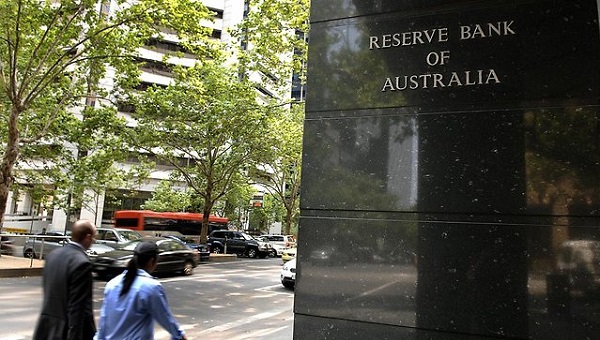December 1, 2014 – Australia’s Central Bank held interest rates at a record low 2.5 percent, signalling its intention to keep an accommodative monetary policy while saying a weaker exchange rate was needed to support growth.
It was the 15th consecutive meeting in which the Reserve Bank of Australia has left the cash rate unchanged, and reflected opposing pressures on the economy with a booming housing market and slumping commodity prices. In a commentary on the decision, bank governor Glenn Stevens said “monetary policy is appropriately configured to foster sustainable growth in demand and inflation outcomes consistent with the target”.
“On present indications, the most prudent course is likely to be a period of stability in interest rates.” The bank reinforced its call for a weaker Australian dollar, which it believes is slowing a rebalancing of the economy away from mining-led growth as resources investment is expected to sharply fall off after an unprecedented boom.
“A lower exchange rate is likely to be needed to achieve balanced growth in the economy,” Stevens said in comments adding to previous remarks that said the currency “remains above most estimates of its fundamental value”. The Australian dollar, which was trading at about 84.80 US cents ahead of the statement, pushed higher to 85.12 cents in the afternoon.
The RBA also noted the significant recent decline in commodity price falls on the back of softer demand and a supply glut, which has hit Australian mining firms and government coffers. “For me the reference to commodity price falls having been significant was important,” Westpac chief currency strategist Robert Rennie said.
“That would suggest that the RBA would like to see further weakness in the Australian dollar well below the 85 US cents mark,” he said. “Obviously the reference to the fact that a lower exchange rate is likely to be needed to achieve balanced growth in the economy I think is an important warning as well.”
Markets have increased expectations that the central bank will cut rates in the next year as commodity prices slump, and with an unemployment rate that has edged up to a decade-high above 6 per cent.
Deutsche Bank said Tuesday it was now pricing in 50 basis points of cuts next year, revising a previous forecast of unchanged rates until 2016. Deutsche Bank chief economist Adam Boyton said the new forecast reflected falling concerns about the heated housing market, such as through the possible introduction of measures to curb investor lending, which would then give the RBA room to ease further.
While reflecting on some of the economic headwinds, Stevens was upbeat about policies supporting growth in China, Australia’s largest trading partner. The bank also retained its view of moderate growth in the Australian economy, saying that while a slight below-trend forecast remained, there were signs of improving non-mining private demand.
“The Reserve Bank seems to be holding its nerve, when you think that they have seen a pick-up in (capital expenditure), building approvals, credit, export volumes and a decline in the Aussie dollar,” St George senior economist Hans Kunnen said.

